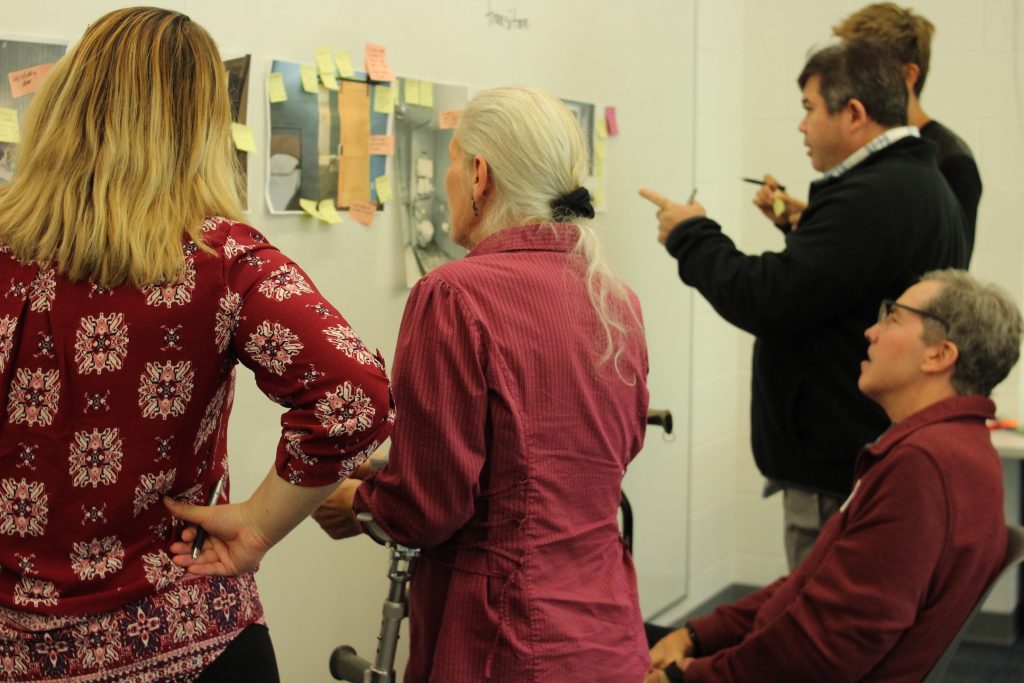How can we use design and technological innovations to renovate homes to be accessible, affordable and aesthetically pleasing to persons with disabilities — especially for existing attached housing, such as townhomes, duplex, triplex, and fourplex?

This was the challenge posed by the U.S. Department of Housing and Urban Development, Office of Policy Development and Research, in 2017.
We believe one approach for addressing this challenge is the concept of repurposing: that is, replacing or adapting problematic fixtures or spaces with others not originally intended for that purpose. Examples are converting the first floor living room/kitchen space of a townhouse into a bedroom en-suite; or using a 10-drawer, rolling tool chest as a cabinetry unit and worksurface in a kitchen. Stories of individuals who adapt, or hack, fixtures and spaces to make their homes more accessible and comfortable reveal that repurposing can be a responsive approach among those with disabilities or functional limitations.
We also believe that design innovations in the home are best “tested” by having intended users experience being in those spaces and performing typical household activities. Are designers’ and builders’ innovations viewed as accessible, suitable, and appealing by people with disabilities? And can we create these so that they are cost effective to people’s household budgets?
Digital virtual reality (VR) technology allows engineers and designers to create visual, immersive simulations that persons not only see but move through and experience. In immersive VR, an artificial environment replaces the users’ real-world surroundings convincingly enough they are able to suspend disbelief and engage with the created environment. Immersiveness varies along a continuum from least to fully immersive. Elements that amplify feelings of immersion and presence in the virtual world include:
- continuity of surroundings (wide field of view)
- conformance to human vision
- stereoscopic vision
- self-directed movement and engagement with objects
- physical feedback
- narrative engagement
- minimal sensory distraction from outside the simulated setting
Project Re-envision used two immersive virtual reality techniques that allowed potential users to experience and provide objective and subjective feedback on the suitability and appeal of our repurposed, re-envisioned residential interiors:
- A digital viewing of interior simulations allowed people to sit and watch moving through the settings using a computer device.
- Preliminary work using a head-mounted VR device, sensor glove and leg sensors allowed a small number of persons with disabilities to move through and experience the settings; but this work suspended when COVID-19 pandemic struck.
This website provides information on the background research and design charrettes that fueled our repurposed residential design interiors; consumer testing of those innovations using immersive technologies; and cost analysis, video, and renovation guidelines to inform consumers and professionals of how to renovate homes using the recommendations from this project. A flowchart profiles the various stages of this project.
About the Sponsor. This project was part of the Research and Evaluation, Demonstrations and Data Analysis and Utilization program (HUDRD), managed by the U.S. Department of Housing and Urban Development’s Office of Policy Development and Research (PD&R). HUDRD seeks to further PD&R’s mission to inform policy development and implementation to improve life in American communities through conducting, supporting and sharing research, surveys, demonstrations, program evaluations, and best practices.
